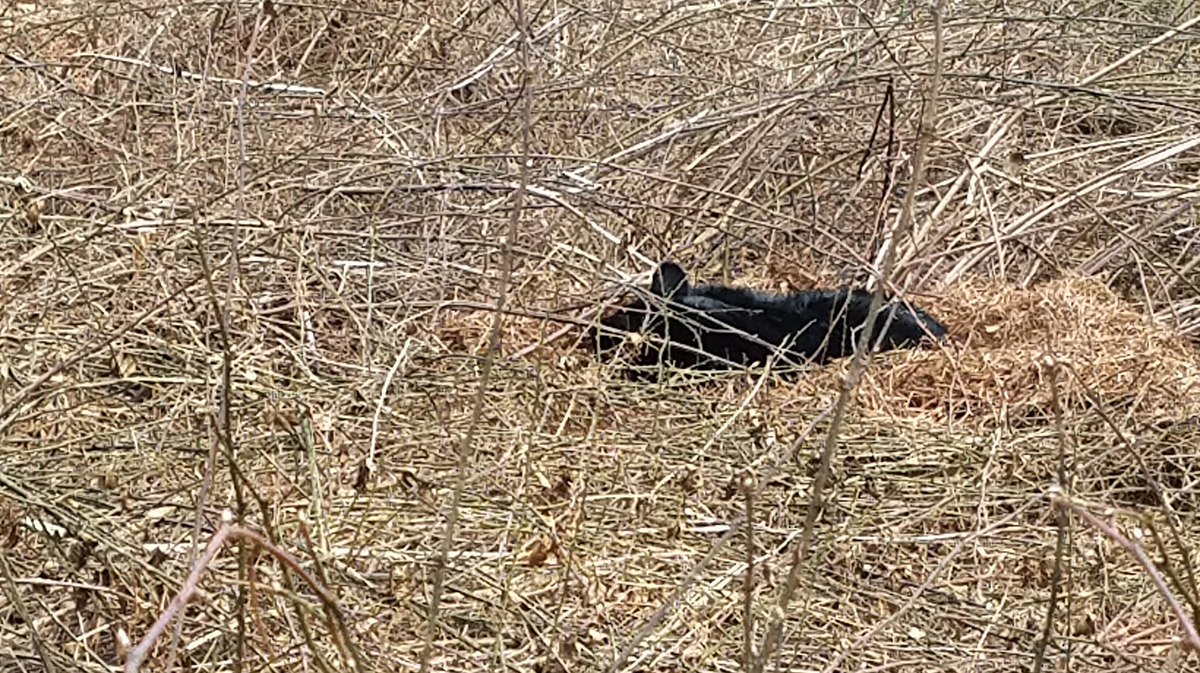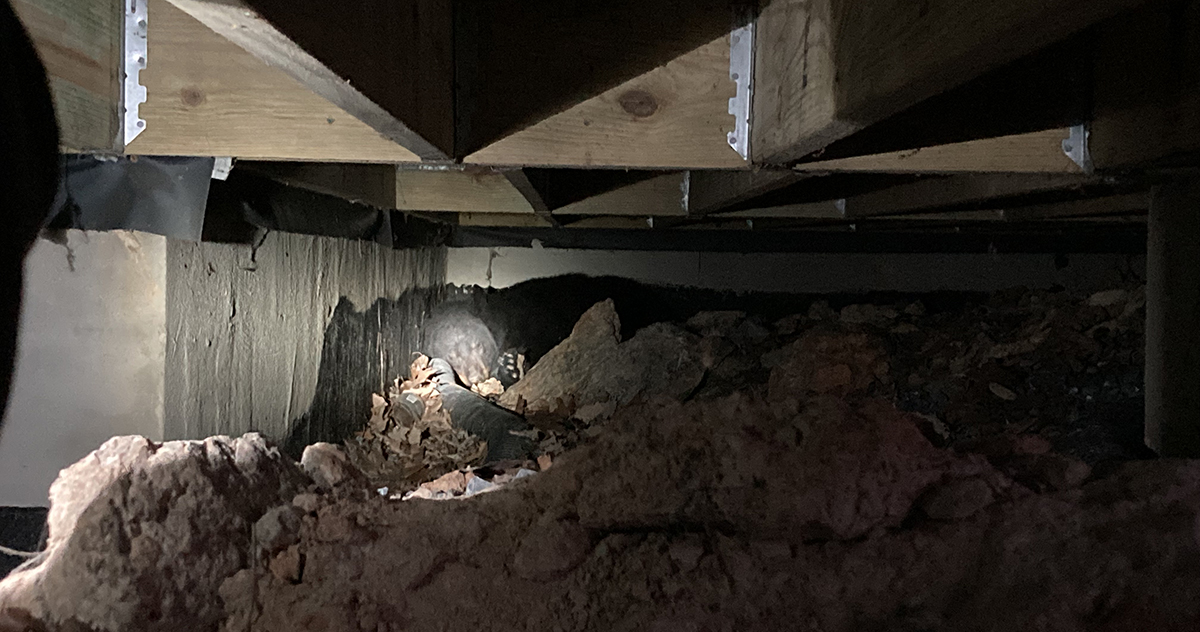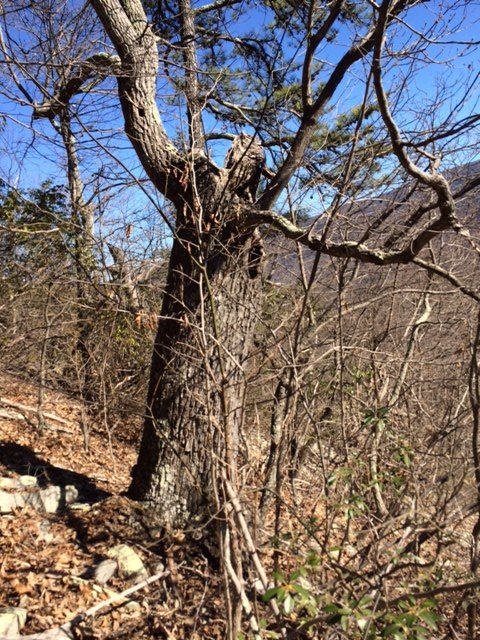Think You Found a Bear Den? Please Leave it Alone!

A bear in her den.
By DWR Bear Team
As temperatures fall and food sources become less abundant, many bears in Virginia will enter a winter den. Other bears will greatly reduce their movements during but may remain active throughout the season. Movements and denning behavior vary greatly across regions of the state depending on weather and available food resources. With the abundant hard mast crop (acorns) across much of the state, many bears will likely delay den entry this year until few acorns can be found.

This bear chose a nice blackberry thicket and made a nest of pine needles for her winter den.
Black bears in Virginia will den in a variety of places including: brush piles, trees (cavities within tree), rock outcroppings, ground nests, debris piles, and occasionally under porches or unsecured crawl spaces. Not all black bears den for the full winter season. Often, black bears that enter a winter den are females who will birth their cubs in the den or females with yearlings. Male black bears may den, but generally do not stay in a den for the entire winter due to the lack of extreme cold weather and snow across much of Virginia.

While this pile of trees, limbs, and other debris leftover from a storm may not look too “homey,” it does the trick for a black bear and her cubs.
While many of us also slow down for the winter, there are still ample opportunities that take us afield in bear country. Whether enjoying a hike, cutting firewood, clearing brush, hunting, or doing other activities you may inadvertently stumble upon a black bear den. A female black bear, particularly one who has had cubs, will likely remain at the den unless they feel pressured to leave. Here are a few tips to avoid disturbing a bear den and what to do should a female leave her den.
Tips to avoid a den
- Avoid hiking in dense brushy thickets or young cutover timber stands. If you must work in these areas be mindful of brush piles, gullies with debris piles, or storm damage areas with thickets of limbs/root balls.
- Always maintain your dog on a leash to avoid a dog-bear encounter at a den site.
- When burning a brush or debris pile on your property, look around the entire pile for signs of digging (fresh dirt, holes) or entry routes into the pile.
- If you notice large excavated holes or fresh trails into debris or brush piles listen closely for the sound of cubs from a distance of at least 30ft away. They often emit a high pitched cry or “squall”.
- To prevent a bear from denning under an occupied dwelling ensure that crawl spaces, mobile home underpinnings, and porches are closed and secured prior to December 1st each year.
Tips if you find a den
- If you find a den on your property or while recreating do not disturb it or approach the area. Leave the area and if on public property alert an employee of the location.
- If you inadvertently flush a female bear from a den, DO NOT approach the den. Take a GPS point of the location (or mark a nearby area with flagging) and leave the area immediately. If you have a dog with you, leash it and keep it maintained on a leash as you leave the area. Contact the Wildlife Helpline (1-855-571-9003) to report the den location.
- Most often when left alone the female will return to the den, although they may not return until night. Do not go back to the den area as additional disturbance may cause the bear to leave again and not return.

While not the ideal spot (according to the homeowner), bears can even make their winter den under porches or unsecured crawl spaces!

Bears also sometimes choose a nice hollow spot in a tree to snooze through the winter.


